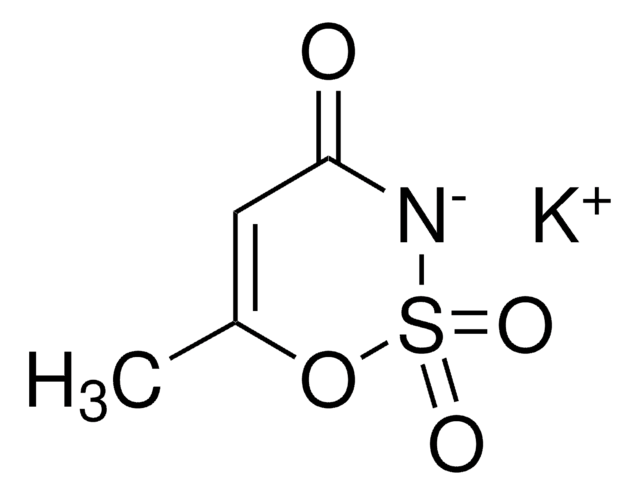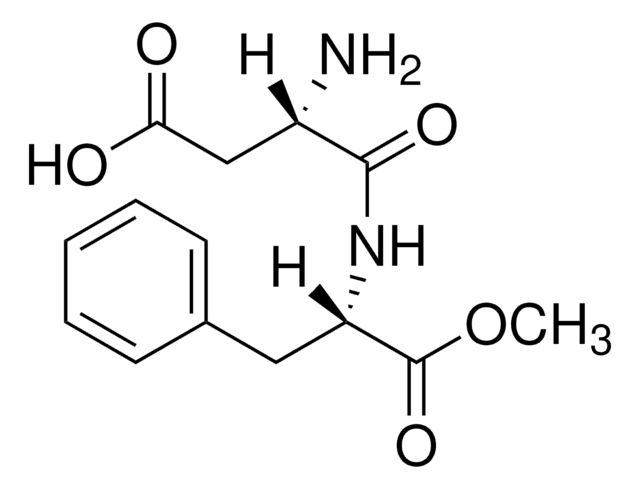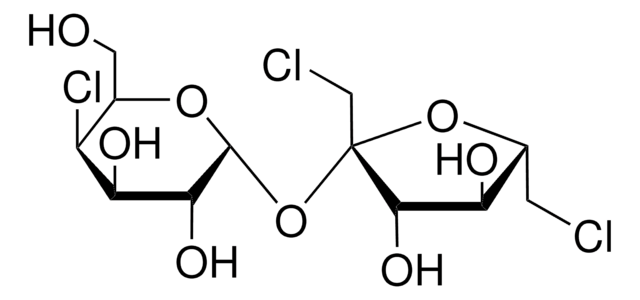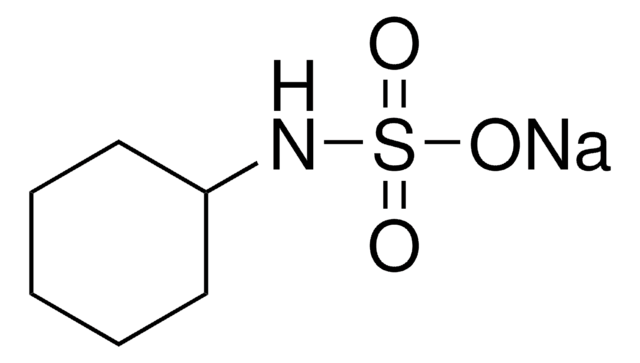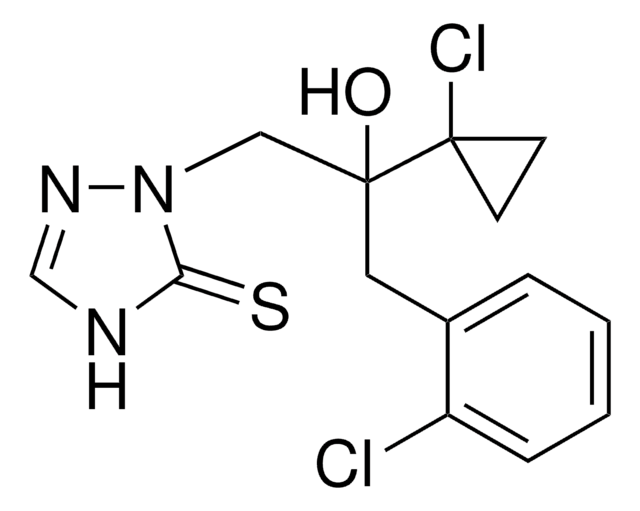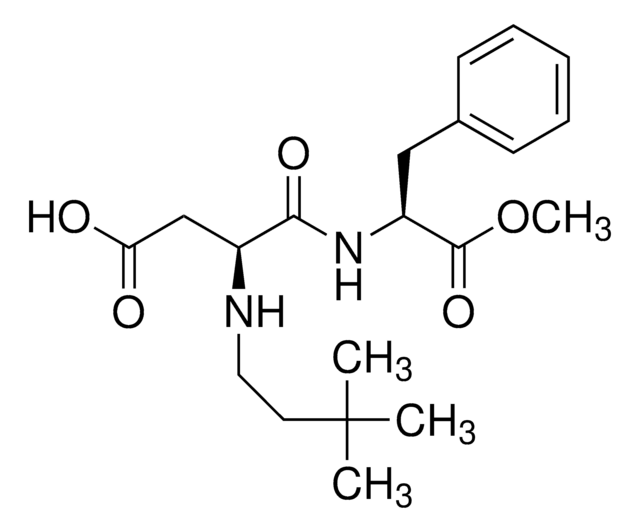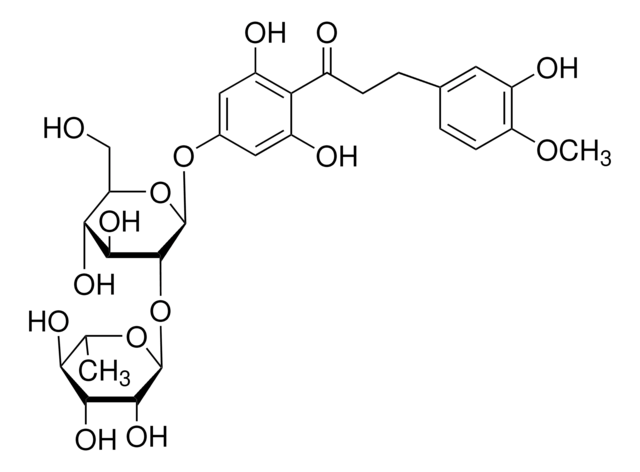Kluczowe dokumenty
47134
Acesulfame K
Synonim(y):
6-Methyl-1,2,3-oxathiazin-4(3H)-one 2,2-dioxide potassium salt
About This Item
Polecane produkty
klasa czystości
analytical standard
Certyfikat analizy
current certificate can be downloaded
metody
HPLC: suitable
gas chromatography (GC): suitable
Zastosowanie
cleaning products
cosmetics
food and beverages
personal care
Format
neat
temp. przechowywania
2-30°C
ciąg SMILES
[K+].CC1=CC(=O)[N-]S(=O)(=O)O1
InChI
1S/C4H5NO4S.K/c1-3-2-4(6)5-10(7,8)9-3;/h2H,1H3,(H,5,6);/q;+1/p-1
Klucz InChI
WBZFUFAFFUEMEI-UHFFFAOYSA-M
Szukasz podobnych produktów? Odwiedź Przewodnik dotyczący porównywania produktów
Zastosowanie
Kod klasy składowania
13 - Non Combustible Solids
Klasa zagrożenia wodnego (WGK)
WGK 1
Temperatura zapłonu (°F)
Not applicable
Temperatura zapłonu (°C)
Not applicable
Środki ochrony indywidualnej
Eyeshields, Gloves, type N95 (US)
Wybierz jedną z najnowszych wersji:
Masz już ten produkt?
Dokumenty związane z niedawno zakupionymi produktami zostały zamieszczone w Bibliotece dokumentów.
Klienci oglądali również te produkty
Nasz zespół naukowców ma doświadczenie we wszystkich obszarach badań, w tym w naukach przyrodniczych, materiałoznawstwie, syntezie chemicznej, chromatografii, analityce i wielu innych dziedzinach.
Skontaktuj się z zespołem ds. pomocy technicznej